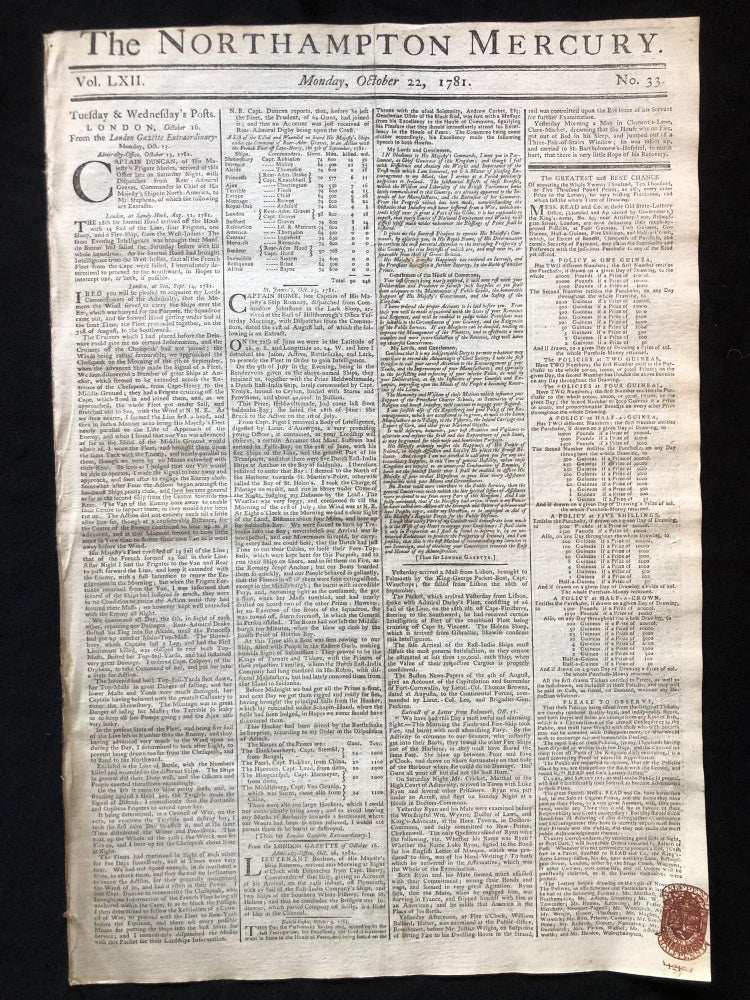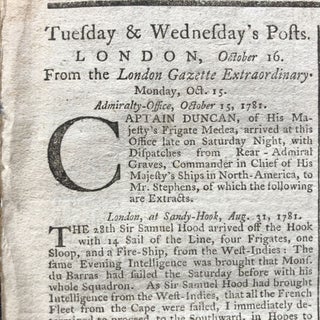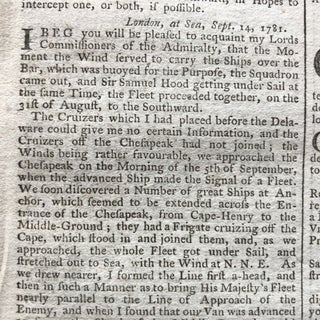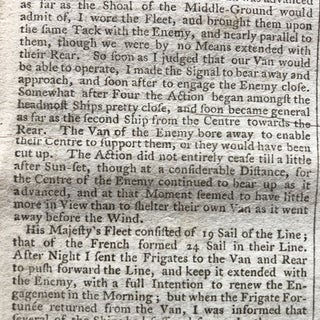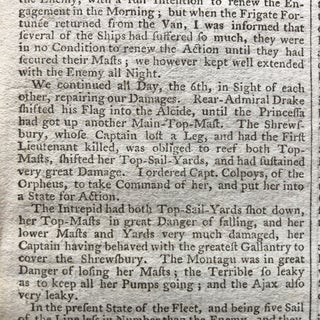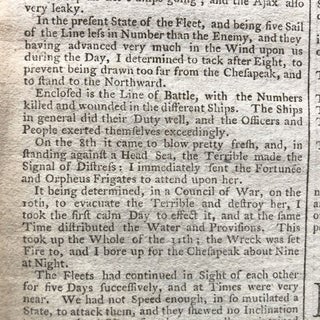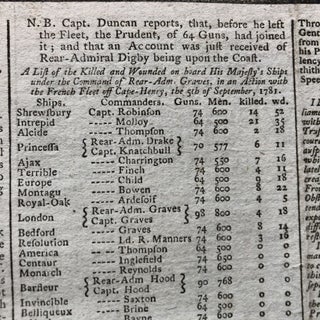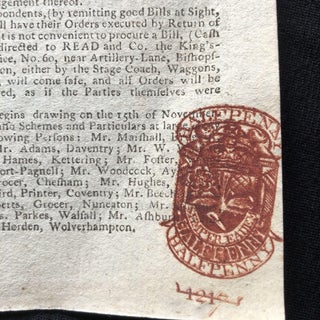1781 newspaper w EYEWITNESS ACCOUNT of the BATTLE of the CAPES Cornwallis Trapped at Yorktown
England: The Northampton Mercury, 1781. Folio. Very Good. Item #900302
A spectacular 1781 Revolutionary War newspaper with a long and detailed front-page eyewitness account of the Battle of the Capes, the pivotal naval battle at the mouth of Chesapeake Bay between French and English warships which sealed the fate of British General Lord Cornwallis, trapped at Yorktown with no chance of escape.
This front-page also gives a listing of the British ships involved as well as the numbers of killed and wounded aboard each ship.
"The Battle of the Chesapeake, also known as the Battle of Capes, was a crucial naval battle in the American Revolutionary War that took place near the mouth of the Chesapeake Bay on 5 September 1781. The combatants were a British fleet led by Rear Admiral Sir Thomas Graves and a French fleet led by Rear Admiral François Joseph Paul, the Comte de Grasse. The battle was strategically decisive, in that it prevented the Royal Navy from reinforcing or evacuating the besieged forces of Lieutenant General Lord Cornwallis at Yorktown, Virginia. The French were able to achieve control of the sea lanes against the British and provided the Franco-American army with siege artillery and French reinforcements. These proved decisive in the Siege of Yorktown, effectively securing independence for the Thirteen Colonies.
Admiral de Grasse had the option to attack British forces in either New York or Virginia; he opted for Virginia, arriving at the Chesapeake at the end of August. Admiral Graves learned that de Grasse had sailed from the West Indies for North America and that French Admiral de Barras had also sailed from Newport, Rhode Island. He concluded that they were going to join forces at the Chesapeake. He sailed south from Sandy Hook, New Jersey, outside New York Harbor, with 19 ships of the line and arrived at the mouth of the Chesapeake early on 5 September to see de Grasse's fleet already at anchor in the bay. De Grasse hastily prepared most of his fleet for battle—24 ships of the line—and sailed out to meet him. The two-hour engagement took place after hours of maneuvering. The lines of the two fleets did not completely meet; only the forward and center sections fully engaged. The battle was consequently fairly evenly matched, although the British suffered more casualties and ship damage, and it broke off when the sun set. The British tactics have been a subject of debate ever since.
The two fleets sailed within view of each other for several days, but de Grasse preferred to lure the British away from the bay where de Barras was expected to arrive carrying vital siege equipment. He broke away from the British on 13 September and returned to the Chesapeake, where de Barras had since arrived. Graves returned to New York to organize a larger relief effort; this did not sail until 19 October, two days after Cornwallis surrendered." - Wiki
This historic Revolutionary War piece is complete in four pages and in beautiful condition. It also features the hated British rec half-penny tax stamp, the same stamp which incited riots across the colonies in 1765 and was one of thee crucial catalysts in leading the colonies toward revolution.
Perfect for framing and display, this unique Revolutionary War artifact would make a fine centerpiece to any Revolution collection.
#IS-0010.
Sold

